categories
Spider Activities
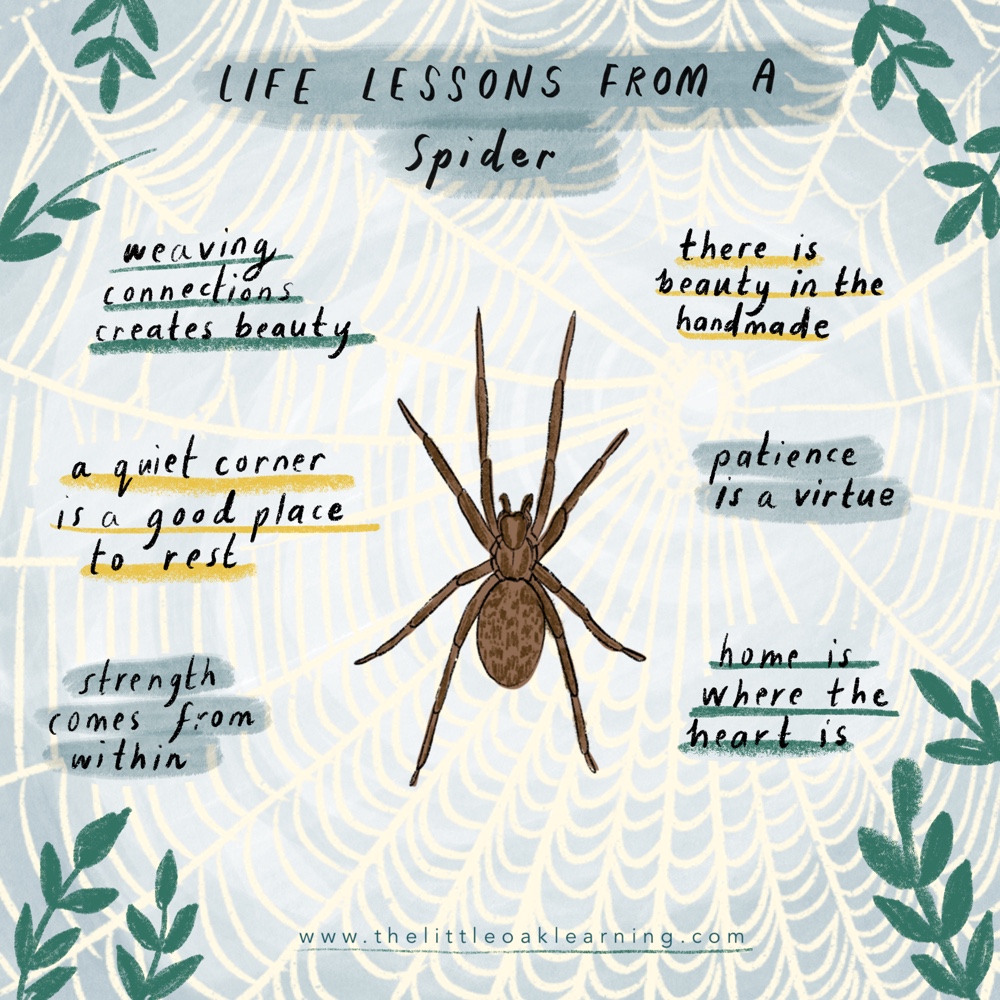
Life Lessons From A Spider
My Life Lessons From series of drawings often create thoughtful responses. Why not have a go at making your own. As you learn about spiders, keep a list of things you are learning from them. You could also have thoughtful conversations about what ‘life lessons’ are. Lessons we want to carry with us through life. We can talk about how people teach us many things, and also nature teaches us many things. We don’t have to be able to talk to one another to learn. There are many ways of observing, communicating and learning. Often with this kind of conversation it’s wise to allow children to mull it over, coming back to it over time. This project is something to be done over a period.
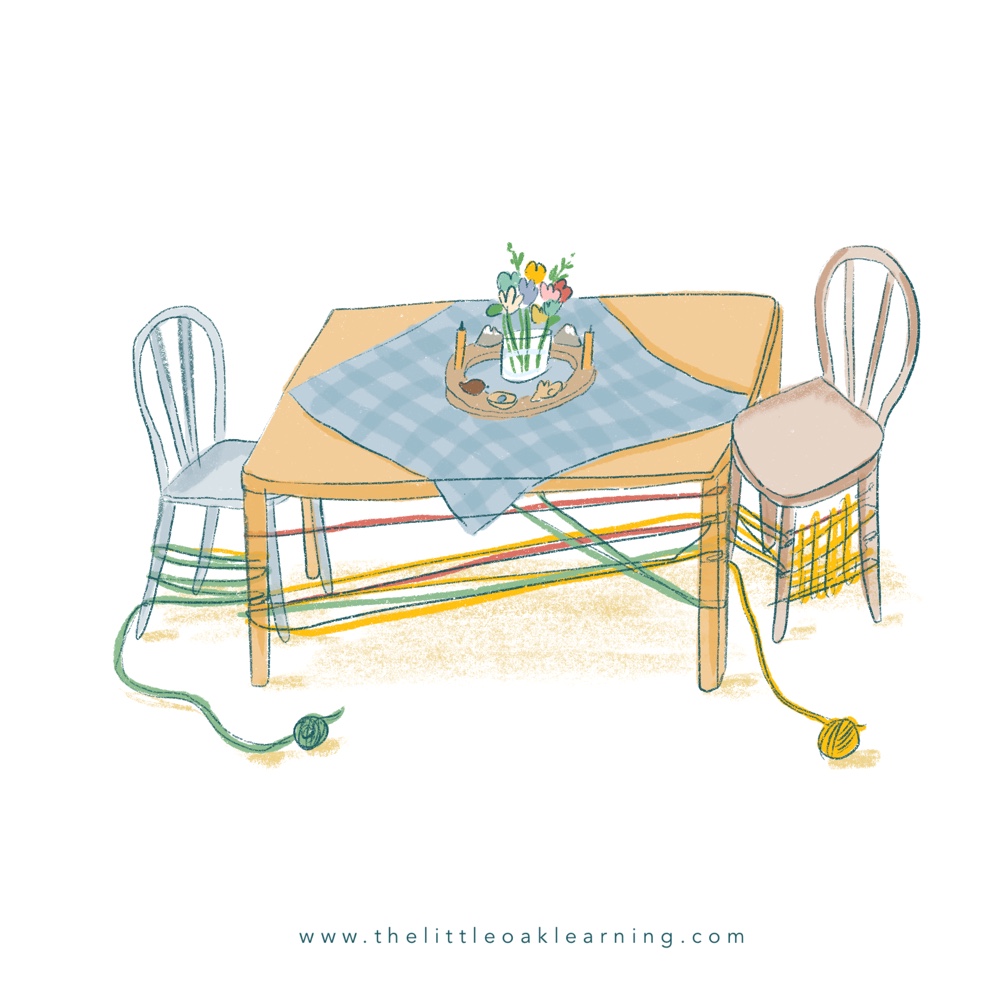
Make Spider Webs
We did this activity at a school I worked at and if you can handle the messy chaos of it, children really become fascinated with it. Provide children with balls of wool or string and encourage them to make their own spider webs by tying yarn around furniture. With this activity children don’t need to be able to tie knots, they can simply wrap the thread over itself. When it’s finished and it’s time for the activity to be put away you can either cut the thread and reuse in craft projects, or have a go at unraveling it by going back on yourself.
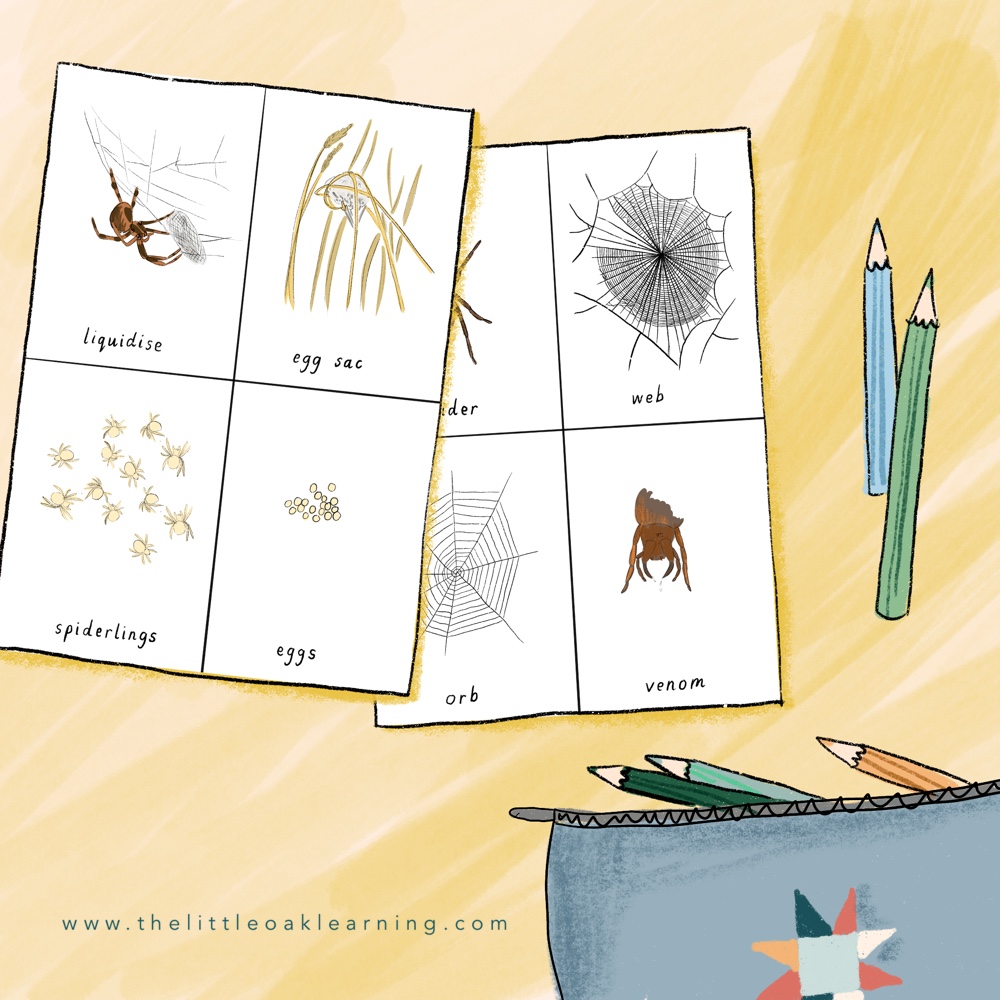
Learn Spider vocabulary
With each new topic comes a wealth of vocabulary. I find it helpful to have that vocabulary on display at home so that the adult can see the vocabulary as well as your child. Children learn new words by hearing them being used in context, many times over. In other words, they need you to model for them. By having word cards on display we constantly remind ourselves of the vocabulary such as ‘liquidise’ and ‘spiderlings’ and so use it appropriately.
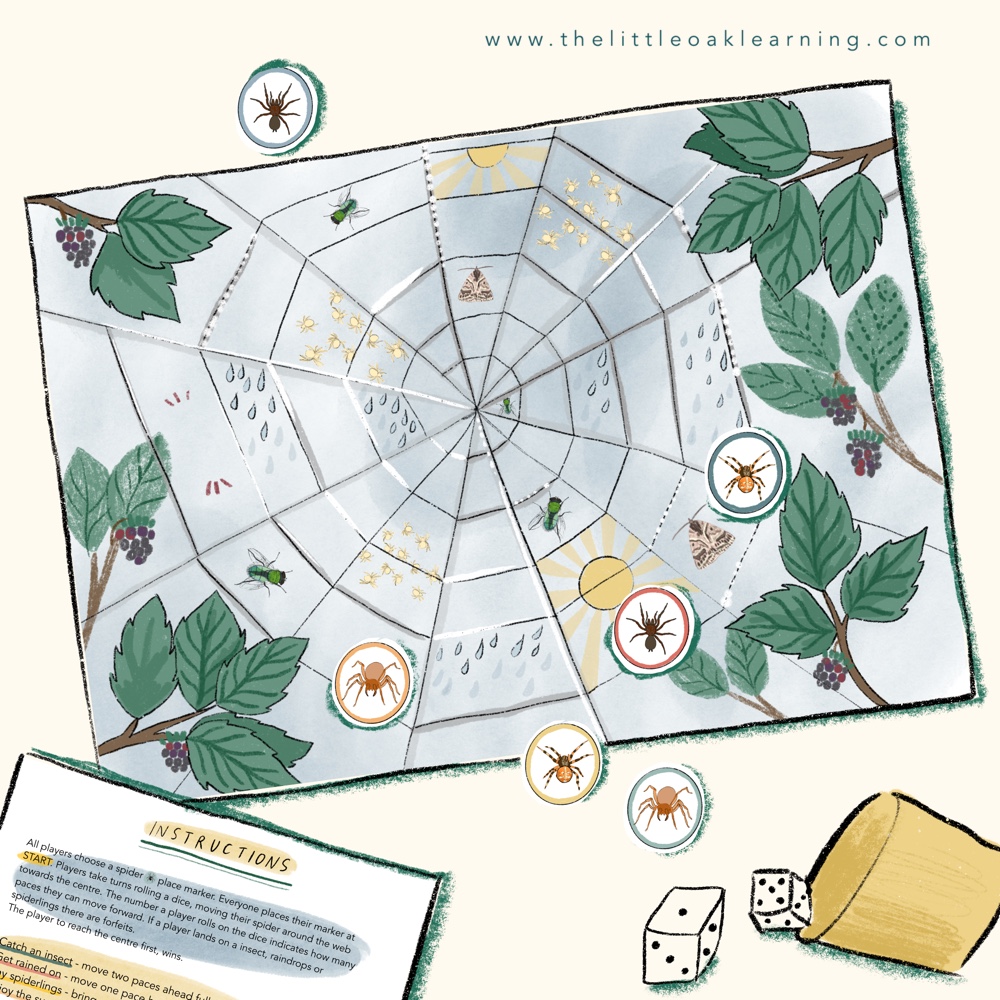
Play A Spider Game
This spider board game is included in our Field Guide to Spiders. I love making board games and I encourage you to make your own. I keep it simple – I create a board with places, in this case it’s parts of a spider web. Players move around the web. You can make place markers for each player. And on this game I created actions, so if a player land on an action they ave to do xyz. Older children or siblings would love to have a go at making their very own board game.
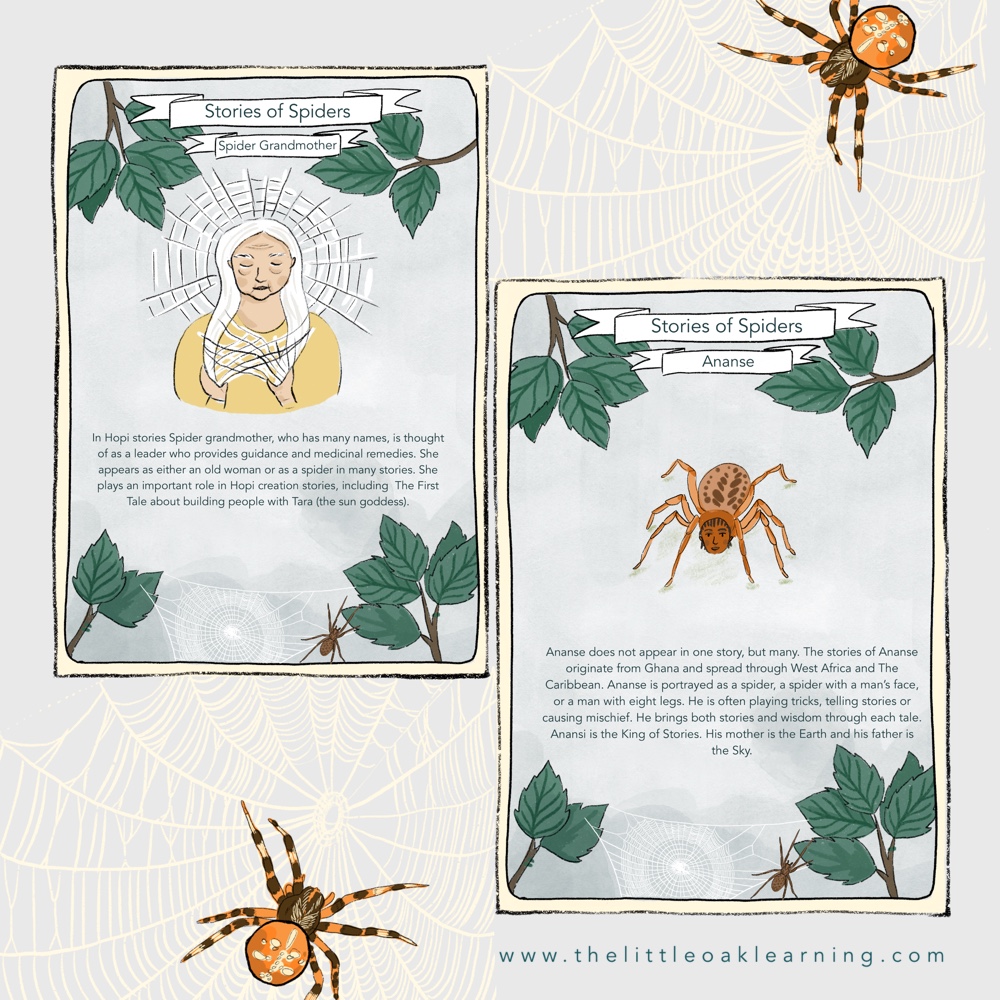
Tell Spider Stories
When researching for the Field Guide to Spiders I learnt that spiders play an important role in many cultures’ stories. They are symbolic. In the Field Guide to Spiders I included a small collection of story cards, just to give you a jumping off point for your spider storytelling. Have fun learning about some spider stories and then research the full story. There are many different ways you could tell the stories-orally around a fire, using shadow puppets, dressing up and acting out, creating puppets from card and cloth, with finger and hand gestures. Perhaps each family member can choose a different story to tell.

Make A Spider Wheel
In our Field Guide to Spiders the central wheel has a selection of unusual spider species and their names. The middle wheel has where they live, where there habitats are. And the outer wheel has what they eat. You can make your own version of the wheel by cutting out circles (drawing round different sized plates works well) and then placing a split pin through the centre once the are all lined up on top of each other. Draw your spiders, habitats, and food on the circles and have fun turning it and matching them. This could create conversations – a child who has made the wheel may want to ask friends ‘what do you think this spider eats?’ Or ‘Which spider do you think lives in this habitat?’
CATEGORY
8/01/2021
COMMENT LOVE